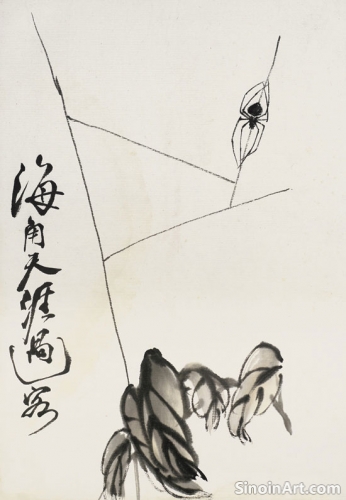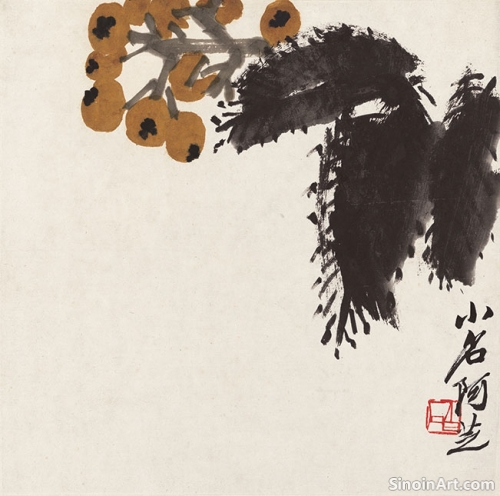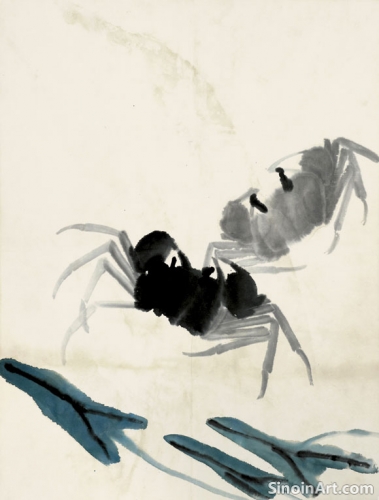Xieyi Painting and the Depiction of Bamboo
|
Bamboo is a particularly popular subject in Xieyi painting, valued for its elegant form, resilient nature, and rich symbolic meaning. Artists use the bamboo as a vehicle for demonstrating technical skill, as well as communicating inner feelings. It's more than just a plant; it has a deep cultural and symbolic significance.  The slender stalks of the bamboo are often depicted with bold, fluid brushstrokes, capturing the plant’s flexibility and grace. The leaves and branches are often rendered with calligraphic strokes, expressing the plant’s vital energy and natural rhythms. The bamboo offers many opportunities for technical experimentation and unique expressive styles.  Bamboo in Chinese culture is often associated with integrity, resilience, and humility, making it a powerful symbol for the qualities that are valued by the literati and artists. It represents qualities that every human being should aspire to. It is a symbolic representation of the virtues of the artist.  The act of painting bamboo can be seen as a form of meditation, allowing the artist to connect with the natural world and to express their inner feelings through the movement of the brush. It is a subject that lends itself particularly well to spontaneity and expressive freedom. The act of painting becomes a form of meditative practice. The simple, elegant lines of the bamboo offer an opportunity for the artist to demonstrate their mastery of brushwork and ink control. The brushstrokes themselves convey a lot about the overall nature of the artist. The simplicity of the bamboo is a test of the artist’s skill. |
Tag : Bamboo painting, Chinese bamboo art, Xieyi bamboo, symbolic plant, ink wash plant
Related information
- Xieyi Painting and the Use of "Light Ink"
- Xieyi Painting and the Use of "Leaving the Brush"
- Xieyi Painting and the Use of "Contrasting Ink"
- The Influence of the "Four Gentlemen" on Xieyi Subjects
- Ink Wash Techniques in Xieyi: Shades of Meaning
"Light Ink" (dànmò) is essential in Xieyi painting, using diluted ink to create subtle tones, soft washes, atmosphere, depth, and delicate transitions, requiring a mastery of brush control, ink dilution, layering, and a delicate touch to convey a sense of quiet beauty.
"Leaving the Brush" (cángfēng) in Xieyi involves concealing the brush tip when beginning and ending a stroke, creating lines with a subtle beginning and end, conveying inner strength, control, and intentionality, contrasting with the technique of "revealing the brush," and demonstrating the mastery of brush control.
"Contrasting Ink" (nóngdànmò) in Xieyi uses both dark and light ink strategically to create depth, volume, texture, and atmosphere through visual contrast, with dark ink creating boldness and light ink adding distance and subtlety, requiring skilled blending to create tonal gradations, expressive depth, and nuanced interplay of light and shadow.
The "Four Gentlemen" (sìjūnzǐ) – plum blossom, orchid, bamboo, and chrysanthemum – are highly revered subjects in Xieyi, each embodying distinct virtues like resilience, refinement, integrity, and longevity, serving as a rich source of inspiration for artists expressing a range of emotions and philosophical ideas.
Ink wash, or shuimo (水墨), is a fundamental technique in Xieyi painting. It involves the skillful application of various shades of ink, diluted with water, to create depth, texture, and atmosphere. Mastery of ink wash is critical for achieving the desired expressive effects.